Here are the latest product announcements from the best mounting and racking companies in the business. See what’s new and what has evolved over the last year. And make sure to visit their websites for a full list of available products in 2014!
![Advanced Racking]() Advanced Racking Solutions metal roof mounting systems
Advanced Racking Solutions metal roof mounting systems
Advanced Racking Solutions Inc. designs and delivers innovative mounting systems for all types of metal roofs. The VICERACK clamped, non-penetrating system attaches to the standing seam on metal roofs and was developed in conjunction with engineers at S-5!. The VICERAIL system for screwed-down metal roofs attaches to the purlin with proper weather sealing. All Advanced Racking Solutions mounting systems are wind tunnel tested. Proprietary system design will not increase wind loading on the building.
VICERACK and VICERAIL can be installed on the north pitch offering greater roof coverage and reduced roof loading — less than 2 psf. Aisles and walkways create access to all modules in the array. Available in a variety of tilts with site-specific layouts provided for each project, including landscape or portrait module orientation. advancedracking.com
![AET]() AET RAYPORT ECO solar mounting solutions
AET RAYPORT ECO solar mounting solutions
Designed for cost-driven projects, AET’s all new RAYPORT ECO solar mounting solutions include all the features installers look for in a cost-competitive package: industry-leading installation, high shipping density (lower freight bill), compatible with all panels, layout/loading analysis included, galvanized for corrosion resistance, lightweight for easy handling on the jobsite and turnkey installation services.
Save time and money with AET’s turnkey installation services available for all AET RAYPORT ECO solar mounting solutions. From the initial phases of design and engineering to manufacturing and installation, AET’s turnkey installation services offer a single point of contact for solar projects. aetenergy.com
![AP Alternatives]() AP Alternatives
AP Alternatives
AP Alternatives’ core focus is providing the highest quality solar racking and installation services for commercial and utility scale systems. AP’s modular solar racking is manufactured and assembled in a quality controlled environment ensuring each system meets strict quality standards. The pre-assembled and prepanelized racking allows for rapid installation times and reduced on-site labor. With more than 25 years of manufacturing knowledge and a proven track record of successful installations, simply send AP Alternatives your modules and let the experts do the rest. apalternatives.com
![Array Tech]() Array Technologies DuraRack
Array Technologies DuraRack
A perfect blend of industry leading technology and cost-saving elements, Array Technologies Inc.’s DuraRack fixed-tilt mounting system has proven itself as the premiere fixed-tilt system of the future. Several of DuraRack’s leading product features include the lowest number of posts per module, an all-bolted coupler solution that eliminates the need for field welding, customizable tilt angles between 10° and 40°, the industry’s fastest install rates and availability in portrait or landscape module configurations. With more than 53 MW installed at five different sites in just less than six months, DuraRack is ramping up to become a leading solution for fixed-tilt ground-mount sites across the solar industry. Photo credit: AMEC, arraytechinc.com
![Daetwyler Clean energy EcoTop]() Daetwyler Clean Energy
Daetwyler Clean Energy
With Daetwyler Clean Energy’s (DCE) experienced engineering and global fabrication facilities, the premier solar racking hardware manufacturer provides economical solar racking hardware direct to installers and project developers for small- to utility-scale installations. Each of DCE’s solar solutions is designed specifically to achieve maximum output while optimizing economics. The Eco-Top and Secure-Top rooftop mounting systems feature modular designs with minimal parts which makes system design and installation fast and easy. The Modu-Rack ground-mount systems are available in several configurations to address any soil condition. The Modu-Rack SA is DCE’s single point anchoring system, and the Modu-Rack DB is a driven beam system. And, the Cap-Rack systems are designed to address conditions encountered with landfill sites. daetwylerce.com
![DPW Solar MidClamp]() DPW Solar Power Rail pre-assembled module clamps
DPW Solar Power Rail pre-assembled module clamps
DPW Solar expands the Power Rail family with the addition of pre-assembled PV module clamps. Designed with the solar installer in mind, the new clamps feature the patented RAD lock-in-place fastener and require no additional field assembly. Simply twist the clamp assembly into any Power Rail channel and slide up the PV module. No loose parts and quick quarter-turn insertion reduce overall assembly times and lower costs on projects. Available with a factory-assembled integrated ground disk, the clamps also feature stainless steel construction for higher strength and reliability in harsh environments. Pre-assembled clamps are now available for mid- and end-clamping of most framed PV solar modules. dpwsolar.com
![Eaton Bline]() B-Line by Eaton mounting systems
B-Line by Eaton mounting systems
Eaton’s B-Line business offers a market-leading Fixed Tilt Ground Mount and Ballasted Flat Roof racking systems for commercial and utility-scale solar projects. The Ground Mount system is configured to match each project site, featuring pre-assembled components, optimized adjustment process and an innovative module mounting process. The result is a simple, fast and structurally reliable solution. The ARISTA rooftop racking system couples a simple, pre-assembled product with an elevated racking system, helping improve system performance while allowing better access to the roof. The solar team from Eaton’s B-Line business is available to provide assistance for all solar projects from the design stage to on-site training and support. bline.com/solar
![EcoFasten GreenFasten]() EcoFasten GreenFasten
EcoFasten GreenFasten
EcoFasten Solar was founded by a former roofer with decades of experience to bridge the gap between the people who design solar arrays and the people who install them. Utilizing a patented watertight bushing and backed by IAPMO Certification, the GreenFasten solar roof-mount system is the strongest, most straightforward solar attachment point in the industry. Compatible with a variety of EcoFasten Solar compression brackets, GreenFasten delivers a mounting solution for virtually all new or existing composition shingle roofs. Utilizing lag bolts to secure this system to a roof means durability you can trust. All EcoFasten products are made with pride in Vermont using recycled materials. ecofastensolar.com
![Ecolibrium]() Ecolibrium Solar EcoFoot2+
Ecolibrium Solar EcoFoot2+
The EcoFoot2+ is engineered to yield all the benefits of the EcoFoot2, plus the added benefit of a universal pre-assembled clamp, a lower part count and innovations that reduce the heat buildup on the racking system. There are only four parts: base, deflector, high tower clamp assembly and low tower clamp assembly. The reduced part count plus pre-assembled clamps increase install speed and lowers the end cost. Additionally, the new clamping mechanism improves module compatibility, spacing flexibility and reduces attachment requirements. Ecolibrium Solar continues to seek the equilibrium between what is economically competitive, ecologically conscious and where innovation can be used to insure integrity. ecolibriumsolar.com
![GameChange]() GameChange Racking Pour-in-Place Ballasted Ground System
GameChange Racking Pour-in-Place Ballasted Ground System
This innovative new ground system from GameChange Racking utilizes self-leveling technology which substantially reduces install time. The Pour-in-Place forms are placed and supported, the concrete is poured and panels are mounted. Ballast/concrete is added only after leveling is completed. This makes installation much faster than precast systems since it is easier to adjust light systems than heavy ones. The simplicity of the process ensures Pour-in-Place can be installed 68% quicker than any precast system. The large ballast footprint reduces landfill cap loading. It’s available in both one- and two-panels-up portrait and comes with an integrated tray for easy wire management. Pour-in-Place is wind tunnel tested, rated for 120 mph wind speed and meets IBC and ASME standards for structural loading. gamechangeracking.com
![Hollaender]() Hollaender Speed-Rail fittings
Hollaender Speed-Rail fittings
Hollaender offers Speed-Rail fittings designed specifically for installation of solar racking systems in areas that experience extreme wind. New fittings include a tee and elbow for use with 2-in. IPS pipe. On a Speed-Rail fitting, the component that produces pipe holding power is a single integrated proprietary internal/external reverse-knurl cup-point set screw that securely attaches the fittings to the pipe and provides tremendous resistance to loosening and pullout. The new fittings are designed with two set screws, producing a substantial increase in pullout resistance. Testing on the 2-in. IPS fitting shows the addition of the second set screw increases pullout capacity from 3,900 to 8,200 lbs on galvanized pipe, an increase of 110%. solar.hollaender.com
![iron ridge top]() IronRidge Roof Mount
IronRidge Roof Mount
IronRidge Roof Mount is a rail-based solar mounting system for residential and commercial rooftops. The unique curved profile of the XRS Rail enables it to achieve a 12-ft span between attachments. This reduces the number of roof penetrations and attachment points per installation, reducing cost and liability. Additionally, IronRidge Roof Mount is certified for Integrated Grounding (UL 2703). The Grounding Mid Clamps bond solar modules directly to the rails, eliminating the need for separate module grounding hardware.
Base installation is also simplified by IronRidge FlashFoot, an all-in-one roof attachment for shingle roofs. FlashFoot integrates a standoff, flashing and L-foot into a single assembly, reducing base installation procedures by up to 40%. ironridge.com
![KB Racking EkonoRack foot 2.0]() KB Racking EkonoRack 2.0
KB Racking EkonoRack 2.0
The KB Racking product development team has taken the intuitive design of EkonoRack and redefined it to meet customer demands. The affordable, flat roof mounting system now features pre-assembled roof protection mats, 20% less aluminum and a sleeker design. The ETL-certified system consists of three major components and has been praised for its simplicity by installers across the United States and Canada. With EkonoRack 2.0, rapid installation and long-lasting durability are now available at a lower price and in more locations. kbracking.com
![Legrand]() Legrand Cablofil FAS Rack
Legrand Cablofil FAS Rack
The Cablofil FAS Rack PV mounting system from Legrand is a line of supports for ground-mounted PV arrays. The FAS Rack system is designed for fast installation with minimal on-site labor requirements. Prefabricated components eliminate time-consuming and expensive “stick built” installations. The system has been engineered to be installed by two-person crews without special tools or large equipment. Designed to ASCE 705 requirements, FAS Rack is engineered and tested to withstand extreme wind and snow loads. Array tables are joined by a slotted splice that allows for thermal expansion and contraction. This feature maintains the system’s UL 2703 rating and eliminates the need to run bonding jumpers or ground each individual table. legrand.us
![Mounting Systems - Alpha]() Mounting Systems Inc. Alpha+ and Tau+ on-roof systems
Mounting Systems Inc. Alpha+ and Tau+ on-roof systems
Alpha+ and Tau+ are new pitched roof racking systems that employ Mounting Systems’ all-new Clickstone technology. The Clickstone works on a simple principle: Click into the rail, position, tighten, done. Alpha+ can be mounted on various pitched surfaces while Tau+ is specifically for trapezoidal sheet metal roofs. The Clickstone’s symmetrical design lets the installer insert the Clickstone into the rail more easily, adjust it more accurately and secure it more quickly. This and new economical rails result in exceptionally fast assembly and easy system installation. Newly designed planning software (Quick Configurator) also speeds project planning and permitting. mounting-systems.us
![PV Racking Power Carport]() PV Racking Power Carport
PV Racking Power Carport
The PV Racking Power Carport is a 60-panel solar carport designed to provide coverage for four vehicles. The three-post carport is engineered to withstand 130 mph wind loads and 35 psf ground snow loads. The bolt-together design makes on-site installation very simple; no welding required. The carport will come equipped with PV Racking slide-in rails, making module installation much quicker than standard clamp based systems. Complete kits are available with modules and inverters. Carport and racking installation services available in the mid-Atlantic region. pvracking.us
![Quick Mount PV]() Quick Mount PV E-Mount
Quick Mount PV E-Mount
E-Mount uses the patented QBlock Elevated Water Seal technology to provide superior waterproofing on composition/asphalt shingle roofs. Priced at a modest premium over commodity roof-mounts, E-Mount makes it possible to deliver Quick Mount PV quality even on price-sensitive jobs. All stainless steel hardware included for fast, single bolt installation. E-Mount comes with a 10-year limited product warranty. quickmountpv.com
![Quickscrews SCSRH180s]() Quickscrews Stone Coat Steel Roof-Mounting Series
Quickscrews Stone Coat Steel Roof-Mounting Series
Quickscrews International now has five different hooks developed for the Stone Coat Steel style of metal roofs. These products have become the No. 1 style for mounting on metal roofs that have the appearance of tile. The parts are mounted under the steel sheet and slip through the overlap, leaving a sturdy mounting base for a wide range of racking systems. The two newest hooks are able to cover wider areas in cases that require it. Quickscrews also added an adjustment capability to compensate for surprises that cannot be seen until the metal sheets are removed. quickscrews.com
![RBI solar 2]() RBI Solar Carport Solutions
RBI Solar Carport Solutions
RBI Solar has included a wide range of solar carport solutions to its product selection including single slope, double slope, inverted slope and full coverage designs. RBI Solar focuses on creating durable, functional and cost-effective custom solutions for each project. RBI Solar’s capabilities also extend into the installation portion of projects. Multiple crews and a fleet of post-driving machines allow RBI Solar to meet the demands of shorter construction schedules. Leveraging more than eight decades of experience in the commercial design-build specialty structures market, RBI Solar works with clients to identify the most economical, low maintenance and robust solar mounting structures. RBI Solar mounting systems are highly engineered and backed by a 20-year product warranty. rbisolar.com
![Renusol MS Marketing Image]() Renusol MS system
Renusol MS system
Renusol MS is a simple, compact and cost-effective pitched roof solution developed specifically for mounting PV modules to trapezoidal sheet metal roofs. Uniquely, the system attaches directly to the sheet metal, eliminating the need for long rails and attachments to purlins or rafters. Made of stainless steel and aluminum, it consists of a clamp base for quick installation, self-piercing and self-tapping screws with hardened tips that eliminate rooftop drilling and pre-assembled, adjustable mid- and end-clamps for securing the PV panel EPDM gaskets under all clamp bases. The system has been third-party tested for waterproof assurance. The Renusol MS system is compatible with all widely used sheet metal roofs 26-gauge or thicker with flat trapezoidal peaks at least 3/4-in. width. renusolamerica.com
![Schletter]() Schletter Fix-EZ Ballasted Flat Roof System
Schletter Fix-EZ Ballasted Flat Roof System
Fast and easy to install, Schletter’s Fix-EZ ballasted rooftop mounting system is now ETL-listed. The Fix-EZ allows for module tilt ranges from 5° to 15°, depending on the length and orientation of the system. The system is designed with multifunctional components and includes integrated ballast blocks, which act as ballast weight in addition to serving as the system’s support mechanism. Module mounting rails support modules and perform as the system’s windbreak with Schletter’s ETL-listed Rapid2+ modules clamps for bonding/grounding the modules to the rails. The ETL-listed Fix-EZ is now available for flat roof projects in every state. schletter.us
![sflex]() S:FLEX LEICHTmount
S:FLEX LEICHTmount
S:FLEX Inc. provides a complete range of rooftop and ground-mount solar structures with in-house custom design expertise. LEICHTmount is a highly flexible flat roof low-ballast system. Designed for hassle-free installations, it can be installed as a non-penetrating system or as an anchored system with minimal strategic attachment points. The combination of variable row spacing, tilt angles between 0° and 35° and extendable base rails allow for individually customized projects. Arriving on site with pre-assembled parts guarantees a simple time-saving install. In addition, it is adjustable to conform to unforeseen design changes or unknown obstructions on the roof. The patented technology of LEICHTmount provides absolute stability by using precisely calculated weight distribution. Photo credit: S:FLEX, sflex.com
![SolarDock]() SolarDock
SolarDock
Invented in 2003, SolarDock was designed to meet the needs of commercial property owners and tenants for racking that would protect their building while providing a strong ROI. SolarDock is engineered to: Protect the roof — SolarDock makes no penetrations, even at high angles, and has no metal parts that touch the roof, eliminating the chance of roof leaks and damage; Protect the solar panels — SolarDock’s full-frame support protects the panel from micro-fractures created by wind uplift forces while enclosed sides and back protect the wiring from damage caused by weather, animals and birds; and Protect the bottom line — SolarDock saves money throughout the life of the system, with reduced installation costs, little or no operations costs,and increased power generation. solardock.com
![solar flexrack]() Solar FlexRack Tracker
Solar FlexRack Tracker
The Solar FlexRack Tracker offers a distributive drive system allowing this single-axis tracker to be installed on sites not usually considered for conventional trackers. Solar FlexRack’s design and flexibility creates maximum ground coverage ratio, accommodating two- or three-high landscape panel orientations. The Solar FlexRack Tracker has gone through extensive third-party testing and validation including wind tunnel testing, full bankability study and full life-cycle testing. The intelligent design allows for a quick and easy installation with no field welding or special equipment required. The SFR tracker’s movements are provided by a maintenance-free actuator, and nylon bearings are also used that require no lubrication. solarflexrack.com
![Sollega FastRack]() Sollega FastRack FR5°
Sollega FastRack FR5°
Sollega’s FastRack FR5° one-piece mounting system was recently installed on a multi-roof array of 820 kW at the Westin Hotel located on the Caribbean Island of St. Maarten. The FR5° utilizes HDPE plastic with UV inhibitor and coated fasteners for superior corrosion resistance. The arrays were ballasted and anchored utilizing Sollega’s heat-weld solution to a fully adhered TPO roof requiring no holes to be drilled in the roof. sollega.com
![SunLink RMS]() SunLink Precision-Modular RMS
SunLink Precision-Modular RMS
Precision-Modular RMS is the newest addition to SunLink’s quality engineered Precision RMS roof-mount racking family. Precision-Modular RMS is constructed of aluminum and features roof-friendly rubber feet that prevent any metal from touching the roof surface. The system is also fully connected north/south and east/west to better distribute loads and does not rely on the module frame as a structural element. The system is assembled, laid out and installed module-by-module to maximize layout flexibility, dramatically reduce costs through standard inventory and facilitate last minute on-roof changes. The building block design is so lightweight and easy to install that it can be assembled by one person. Precision-Modular RMS is available for 60- and 72-cell modules and 5° and 10° tilt. sunlink.com
![Sunmodo sunbeam]() SunModo
SunModo
SunModo Corp. was formed with the mission of driving down the total cost of solar systems through product innovation and system integration. Its patented flashing mount product has been used to install more than 10,000 solar projects. Moreover, SunModo continues to improve its existing products and develop new products. The new SunBeam system is one of those innovations with the following key features: robust, versatile and advanced engineering that’s designed for multiple configurations; spanning over obstacles to take full advantage of roof space to maximum the system size, offering increased ROI; lightweight for structural loads, and strong for high costal winds; and made of all-aluminum to resist costal salt air corrosion. sunmodo.com
![Zilla_PVC-ElectricalFlashing_Patent]() Zilla Store
Zilla Store
The new Zilla Store is now open for business, making it easier for solar professionals to select and purchase Zilla products, reducing time delays on installations. The Zilla Store allows users to order the newest line of Zilla products including Zilla Flashings, Zilla Rac Pacs and other popular Zilla products. The new PVC Electrical Flashings is the newest iteration of the best-selling Zilla Electrical Flashing which is designed for a water-tight seal to protect solar installations’ electrical components and the roofs on which they are installed. The new Zilla Rac Pac offers racking and attachment components for two modules included in one easy package. zillarac.com
-- Solar Builder magazine


















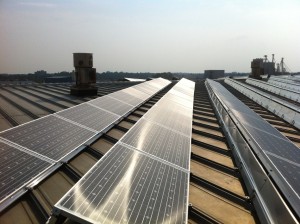

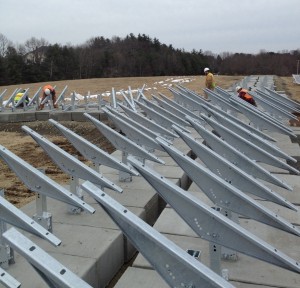
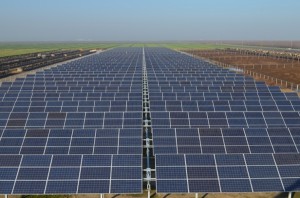












































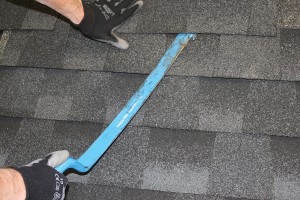


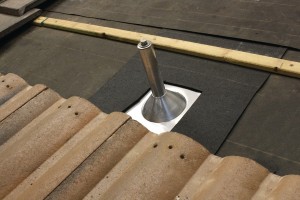



 Welcome to the 2015 edition of the Solar Builder Mounting Guide. Within this year’s guide, we look at all of the advancements in mounting technology currently driving the industry forward and what additional trends are on the horizon; we discuss the effects of severe weather and what you can do to protect your investment; we look at how regulations and codes are playing into mounting strategy; and we roundup some of the top mounting products on the market.
Welcome to the 2015 edition of the Solar Builder Mounting Guide. Within this year’s guide, we look at all of the advancements in mounting technology currently driving the industry forward and what additional trends are on the horizon; we discuss the effects of severe weather and what you can do to protect your investment; we look at how regulations and codes are playing into mounting strategy; and we roundup some of the top mounting products on the market. The story of solar mounting technology is a familiar one, in which original technology is slowly replaced by newer options that improve upon certain aspects of the original. Where the initial equipment was focused on establishing a viable product to build an industry, the next wave of trends works to improve, yet simplify what’s already been established. In speaking with dozens of mounting technology companies, this picture emerges. More cumbersome applications with multiple pieces are streamlined and costs come down, all of which eases certain project headaches for contractors. Let’s look at some of these trends specifically, and what you should be thinking about before starting your next project.
The story of solar mounting technology is a familiar one, in which original technology is slowly replaced by newer options that improve upon certain aspects of the original. Where the initial equipment was focused on establishing a viable product to build an industry, the next wave of trends works to improve, yet simplify what’s already been established. In speaking with dozens of mounting technology companies, this picture emerges. More cumbersome applications with multiple pieces are streamlined and costs come down, all of which eases certain project headaches for contractors. Let’s look at some of these trends specifically, and what you should be thinking about before starting your next project.

